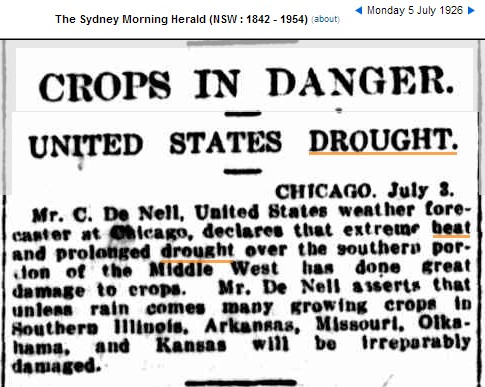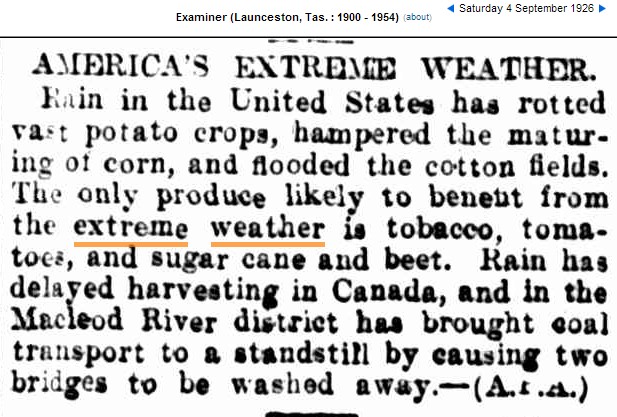The summer of 1926 brought extreme heat and drought to the US, and then extreme rain. Both threatened the food supply.
Had they raised taxes in 1926, they could have prevented the 1930s Dust Bowl. ™James Hansen
05 Jul 1926 – CROPS IN DANGER. UNITED STATES DROUGHT. CHICAGO,…




Obviously taxation is the answer, and the problem…
“When the federal income tax was enacted in 1913, the top rate was just 7 percent. By the end of World War I, rates had been greatly increased at all income levels, with the top rate jacked up to 77 percent (for income over $1 million). After five years of very high tax rates, rates were cut sharply under the Revenue Acts of 1921, 1924, and 1926. The combined top marginal normal and surtax rate fell from 73 percent to 58 percent in 1922, and then to 50 percent in 1923 (income over $200,000). In 1924, the top tax rate fell to 46 percent (income over $500,000). The top rate was just 25 percent (income over $100,000) from 1925 to 1928, and then fell to 24 percent in 1929.”
Had they only kept rates high, they never would have had to contend with all that evil white man weather.